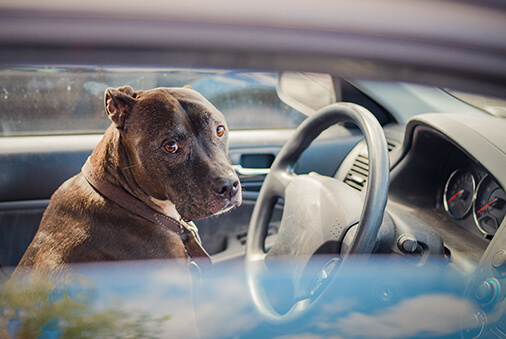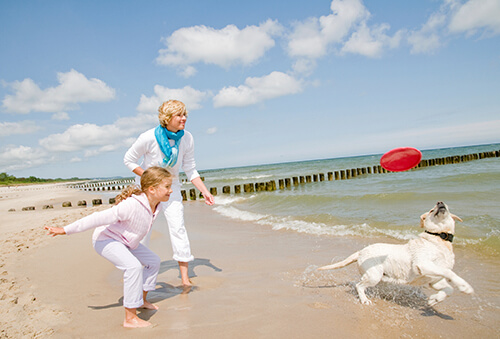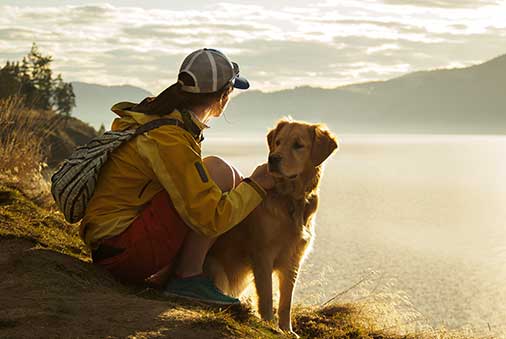When it’s a cloudless, sunny day and the mercury hits 90 degrees Fahrenheit, we’re usually wearing shoes or sandals and don’t even notice the heat beneath our feet. Try wearing paws with pads, and it’s another story — a hot one.
Pavements can get so hot, they can sear our furry family members’ paws, even though we may think their pads are tough enough to take it.
Take the pavement’s temp
How do you know when a surface is too hot? Press the back of your hand to the pavement and hold it there for seven seconds. If you can’t keep pressing because the surface is too hot, then it’s too hot for your dog’s paws.
It’s best to avoid all hard surfaces on hot days. Concrete, metal, rocks and sand can all scorch your dog’s paws. Black asphalt on roads and in parking lots is particularly dangerous because black objects absorb more heat than lighter ones. You might be walking your dog safely in the grass but need to cross a road where the asphalt could burn their pads.
First signs for first aid
If you’ve been out with your best pal on a hot day, look for the following symptoms to see if their paws have a heat-related injury:
- Limping or refusing to walk
- Darkening of paw pads
- Licking or gnawing at their feet
- Blisters or redness
- Bleeding
Any of these symptoms require first aid. First, get your animal to a cool spot with a cool surface; you may have to carry them. Then, soak and clean each of their paws with cold water and, if possible, apply a cold compress as if you were treating a sports injury.
Ideally, you should call your veterinarian to schedule a visit. The veterinarian will examine your dog’s paws and determine if any painkillers or antibiotics are needed, depending upon the severity of any burns.
Work around the heat
While minding hot surfaces is the main preventive measure, you can also avoid hot paws by scheduling early morning or later evening walks on hot days.
If you can only walk your dog midday, you may want to buy your buddy shoes. These nifty shoes slip over your dog’s paws where they are secured with fasteners. Most canine shoes have a hard rubber sole so your furry pal can enjoy the same comfort and protection you do.
They also have paw protectors for snow and ice, but that’s another shoe for another season.





